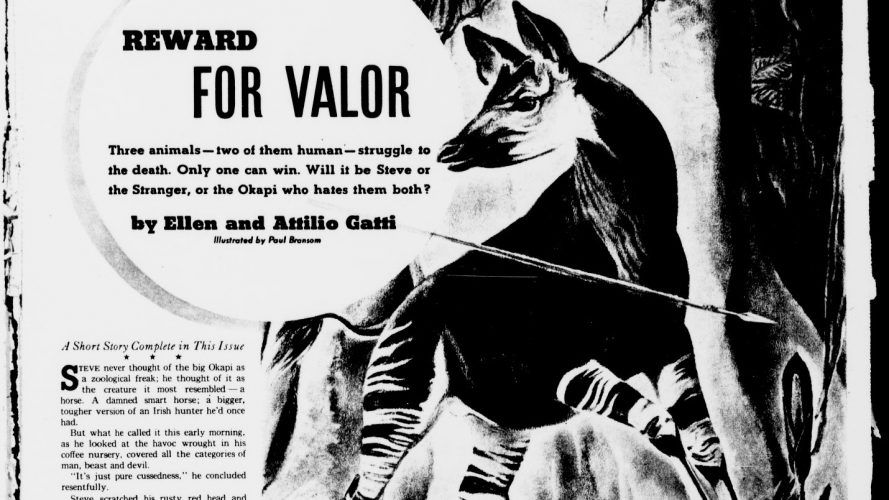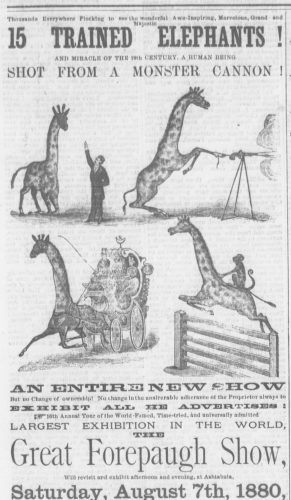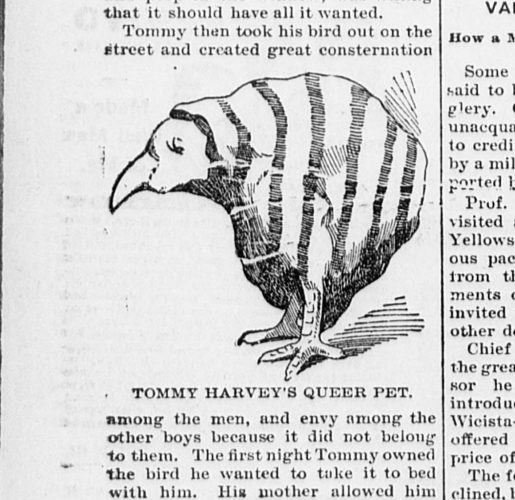Weird Animals in Newspapers and How to Find Them

Is your favorite animal…weird?
I had a teacher whose favorite animal was the okapi, which looks somewhat like a cross between a deer, a zebra, and a giraffe. In all my curious years of childhood, I’d never heard of such a creature: surely a myth, like the Arthurian questing beast! A myth, or at least a species newly documented by a scientist who, presumably, must have looked exactly like Steve Irwin.
As a kid, my concept of “normal” animals was pretty narrow: anything that could be a pet if my parents gave me a chance (I’d have been very responsible, you see). Back then, my research skills extended not much further. However, now that I work with newspapers, I’ve discovered that my teacher was not alone in his fondness for unusual animals–and never has been!

Like gossip columns and human interest stories, reports and tales of unusual animals have captured the delight and fascination of newspaper readers–and editors–for centuries. To find these animals, it’s important to select the right keywords. In addition to using specific animal names, terms like “strange,” “weird,” “odd,” “rare,” “mystery (or mysterious),” and even “exotic” and “queer,” show up in newspaper articles about unusual animals.
You might see giraffes performing circus tricks, as in this advertisement for the “Great Forepaugh Show.” Interestingly, the giraffe is the only extant relative of the okapi, and likely the inspiration for the Arthurian questing beast–I’d been on the right track after all! Even relatively normal animals–like the pike–can be “peculiar” to the public imagination. This 1896 article in the Perrysburg Journal details the unusual habit of pike to hunt birds as large as loons. Certainly a reversal of the usual birds going a-fishing.
On that same page, a “strange bird pet” is discussed and illustrated. The authors are unsure what to make of the bird – and therefore haven’t included a name by which we could find it directly. That’s why keywords are important for tracking down these sensational animals.

Another tip: if you’re on the hunt for off-beat creatures within the pages of the papers, keep in mind that stories tend to travel in packs. An editor is likely to publish the same kinds of news stories in each issue, to keep the attention of their audience. If a newspaper title has a recurring segment or tends to pop up in your results multiple times, it’s likely that title has more of what you’re looking for. Consider doing a keyword search within a specific newspaper title as a way to narrow down your results.
If you’re intrigued by the promise of unusual animals in newspapers, but the wide world of the animal kingdom seems intimidatingly large, check out our animal-themed crossword puzzle, developed as part of the NDNP grant series. All the answers are found in newspapers on Chronicling America, so you can brush up on your research skills while you’re at it.
What’s the weirdest animal you’ve ever seen in a newspaper?
Thank you to Jen Cabiya, Digital Projects Coordinator at the Ohio History Connection, for this week’s post!



Leave a Reply
You must be logged in to post a comment.